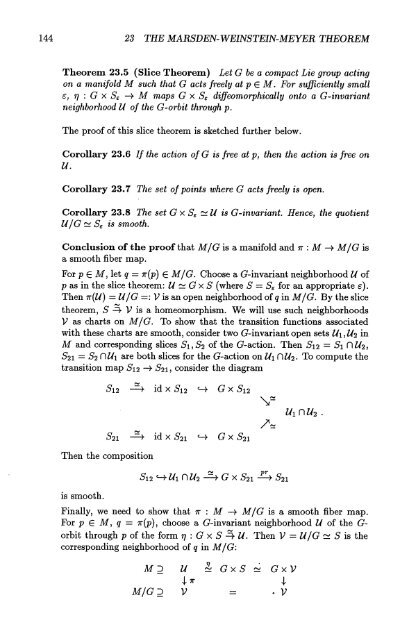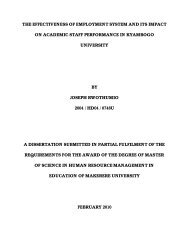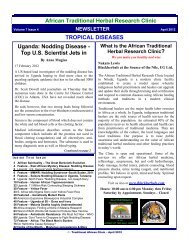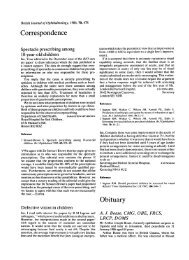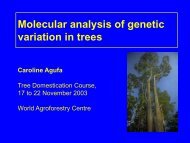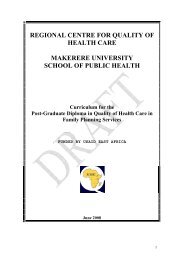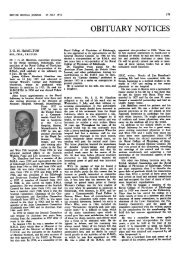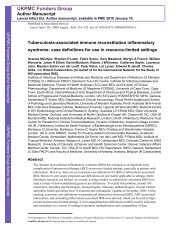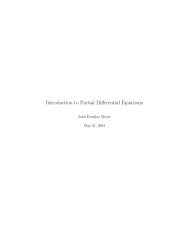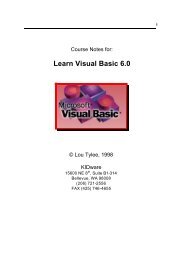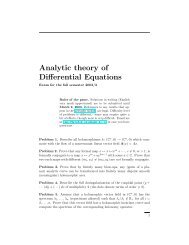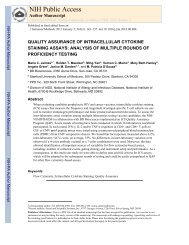Symplectic Reduction
Symplectic Reduction
Symplectic Reduction
Create successful ePaper yourself
Turn your PDF publications into a flip-book with our unique Google optimized e-Paper software.
144 23 THE MARSDEN-WEINSTEIN-MEYER THEOREM<br />
Theorem 23.5 (Slice Theorem) Let G be a compact Lie group acting<br />
on a manifold M such that G acts freely at p E M. For sufficiently small<br />
,-, tj : G x S, -+ M maps G x S, diffeomorphically onto a G-invariant<br />
neighborhood U of the G-orbit through p.<br />
The proof of this slice theorem is sketched further below.<br />
Corollary 23.6 If the action of G is free at p,<br />
U.<br />
then the action is free on<br />
Corollary 23.7 The set of points where G acts freely is open.<br />
Corollary 23.8 The set G x S,, U is G-invariant. Hence, the quotient<br />
-<br />
-<br />
UIG S, is smooth.<br />
Conclusion of the proof that MIG is a manifold and -7r : M -+ MIG is<br />
a smooth fiber map.<br />
For p E M, let q<br />
=<br />
7r(p) E MIG. Choose a G-invariant neighborhood U of<br />
p as in the slice theorem: U -- G'x S (where S = S, for an appropriate 6).<br />
Then 7r(U) UIG = =: V is an open neighborhood of q in MIG. By the slice<br />
theorem, S 4 V is a homeomorphism. We will use such neighborhoods<br />
V as charts on MIG. To show that the transition functions associated<br />
with these charts are smooth, consider two G-invariant open sets U1, U2 in<br />
M and corresponding slices S1, S2 of the G-action. Then S12= S, nU2,<br />
S21 S2 nUl = are both slices for the G-action on U, nU2. To compute the<br />
transition map S12 -+ S21, consider the diagram<br />
S12 -24 id x S12 G x S12<br />
U, nU2 .<br />
S2, - + id x S2, G x S2,<br />
Then the composition<br />
is smooth.<br />
S12-+ U, n U2 -L G x S21 24 S21<br />
Finally, we need to show that 7r : M -+ MIG is a smooth fiber map.<br />
For P E M, q = 7r(p), choose a G-invariant neighborhood U of the G-<br />
orbit through p of the form q : G x S -4 U. Then V = UIG -- S is the<br />
corresponding neighborhood of q in MIG:<br />
MD<br />
U<br />
17<br />
GxS '<br />
GxV<br />
7r<br />
MIG D V v


